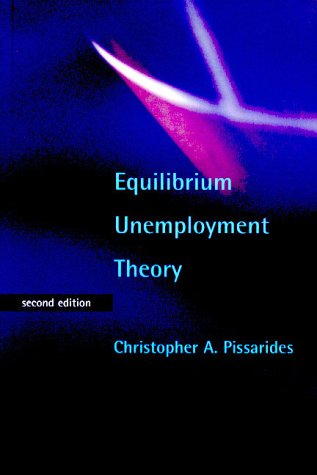Equilibrium unemployment theory epub
Par cameron christine le samedi, juillet 2 2016, 01:48 - Lien permanent
Equilibrium unemployment theory. Christopher A. Pissarides

Equilibrium.unemployment.theory.pdf
ISBN: 0262161877,9780262161879 | 0 pages | 2 Mb

Equilibrium unemployment theory Christopher A. Pissarides
Publisher: MIT
Is theory going to supply an answer here? A new theory emerged to explain the apparent cyclical relationship between the equilibrium unemployment rate and the actual unemployment rate. [13] Pissarides (2000), Equilibrium Unemployment Theory (Second Ed.). It's one thing to explain the current equilibrium, it's another to tell us how to get back to a better one. Here is his book on equilibrium unemployment theory. Equilibrium unemployment theory book download Download Equilibrium unemployment theory Equilibrium unemployment theory Christopher A. Note that the terms “involuntary unemployment” and to be to distinguish one category from the other? It was called the – hysteresis hypothesis. Of course this analogy points to just one possible factor, it is hardly a comprehensive account of current unemployment, even if you ignore any possible problems in the story. He has a very good paper on hysteresis and how originally short-term unemployment can worsen and persist. �His book 'Equilibrium Unemployment Theory' is a standard reference in the economics of unemployment” One of the pioneers of matching theory approach to unemployment theory and a distinguished speaker, Prof. Prior_approval April 29, 2013 at 10:21 am. I argue that the unemployment rate returns to a level that depends on wealth and, just as there are many equilibrium unemployment rates, so there are many equilibrium values for the prices of assets. General-equilibrium models for studying monetary influences in general and the zero lower bound on the nominal interest rate in particular contain implicit theories of unemployment. The intersection of the two curves determines the market clearing real wage and the equilibrium level of employment. He emphasized that point in today's phone interview. In some cases, the theory is explicit. The latter is entirely unexplained by the benchmark homogeneous-agent model of equilibrium unemployment theory.